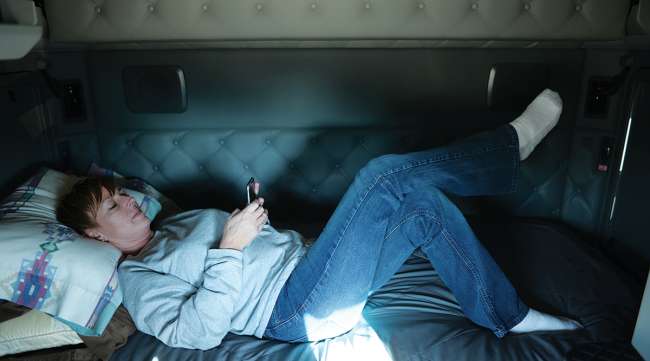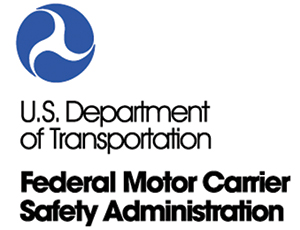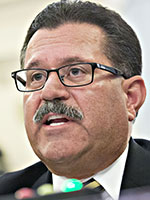Drivers Offer FMCSA Tweaks to Proposed HOS Rule

[Stay on top of transportation news: Get TTNews in your inbox.]
Federal trucking regulators got a variety of suggestions, mostly from truckers, on how to tweak a proposed hours-of-service rule designed to give drivers more flexibility to do their jobs, but safely.
In short, they wanted a little more flexibility.
In a mostly cordial two-hour listening session Aug. 23 led by a panel of top Federal Motor Carrier Safety Administration officials, several drivers suggested that the agency give them the ability to break up the mandatory 30-minute rest break, allow team drivers to use a 6-4 hours split or 5-5 split of their time in the sleeper berth and make it clear to motor carriers that drivers make the call on how they use their time in the sleeper berth.
Currently, drivers are required to divide a 10-hour off-duty period in a sleeper berth into eight hours of rest and two hours of nondriving time.
The listening session, held at the Great American Trucking Show in Dallas, was the first of two planned by the agency. The session was streamed over the internet. A second session will be held in Washington in September.
Many drivers expressed a need for greater flexibility within the 30-minute rest-break provision, such as splitting the break into two 15-minute segments or three 10-minute segments.

Candace Marley, an independent contractor who also has worked as a company driver, said 30 minutes is longer than necessary for a sufficient break. She said both she and her dog favor shorter breaks at more frequent intervals, such as a 10-minute break every two hours.
“Most of us just sit in the cab waiting for break to be over. Let’s encourage more movement throughout the day,” Marley said. “Like a good portion of our trucking community, I get paid by the mile. I need my wheels to keep turning, but I need appropriate breaks.”
Steve Smalley, an ABF Freight System less-than-truckload driver, said 10- or 15-minute break periods offer enough time for drivers to go into a store for a snack or use the restroom. He said that moving around is key to maintaining blood circulation and staying awake at the wheel.
Submit comments on FMCSA’s proposed rule changes to Hours-of-Service regulations directly to the Federal Register Docket here: https://t.co/trXlXX29sv
Public Comment period closes October 7, 2019. pic.twitter.com/M3km9yhtoe — FMCSA (@FMCSA) August 26, 2019
Smalley, a member of American Trucking Associations’ 2017-18 America’s Road Team, also pointed out that drivers who specialize in pickups and deliveries in cities have to move their trucks frequently.
“The 30 minutes restricts us. Most of the guys that I work with complain about this a lot,” Smalley said. “The bottom line is to keep us from falling asleep.”
Gary Buchs, an owner-operator who drives for Landstar, also said breaks can benefit a driver’s health. Due to the sedentary nature of their work, many drivers risk becoming obese or developing heart disease.
“Our health is bad enough out here,” Buchs said. “You don’t have to be a doctor to look around and say, ‘We’ve got a health problem in our industry.’ ”
Lewie Pugh, executive vice president of the Owner-Operator Independent Drivers Association board of directors, said his group appreciates the proposal’s increased flexibility in the sleeper berth provision.
“But we wonder why not a 6-4 and 5-5?” Pugh asked. “We have drivers who are husband-and-wife team that need that 6-4 or 5-5 for their operation.”
Pugh added, “On the 30-minute break, we’d like to see it go away. If it’s not going to go away, why can’t they break that up into two 15-minute breaks?”
Ingrid Brown, an owner-operator with Rollin’ B, said she favors a 5-5 split for team drivers in the sleeper berth.
“I’m going to fight hard for these teams, because 5-5 is the sweet spot for a team,” Brown said. “The reason is you can’t ride anywhere in this country more than five hours asleep. … Any time a truck stops, you’re awake wondering what’s going on.”
Andrea Marks, a spokeswoman for Trucker Nation, said her group is glad that the proposal makes it clear that drivers are the ones who make the decision on when they should pull off the road in adverse weather.
“However, it’s vital that the same conversations, questions and consideration be given to such provisions as the sleeper berth and split duty,” Marks told the panel. “The only person making the safety decisions on the road is the driver. This added layer of protections is necessary to achieve the highest level of highway safety for commercial drivers and the motoring public.”
Riky Von Honaker, director of risk management at TX Loadrunners, said he’s concerned that the proposal’s definition of an adverse condition is not clear and is ripe for abuse.
“I do 100% agree that the decision should be with the driver,” Von Honaker said. “My concern is the compliance review factor of being able to satisfy that there was an adverse condition. Some drivers want to use it for everything and anything. A forecasted hurricane is not an adverse condition.”

Martinez
The agency is seeking public comment on the proposal through Oct. 7. FMCSA Administrator Ray Martinez noted that the proposed changes do not present a panacea for all industry concerns but should improve safety. He urged participants to submit comments detailing not only what they liked about the NPRM, but also what they disliked. Although he acknowledged the process is long, he reiterated his commitment to keeping this proposal on a “fast track.”
“We want you to take it seriously. Don’t give up because of the length of this process,” Martinez said. “We firmly believe that any changes that can lead to improvements in safety, flexibility and efficiency in this important sector of the economy can only be achieved by this kind of engagement.”




